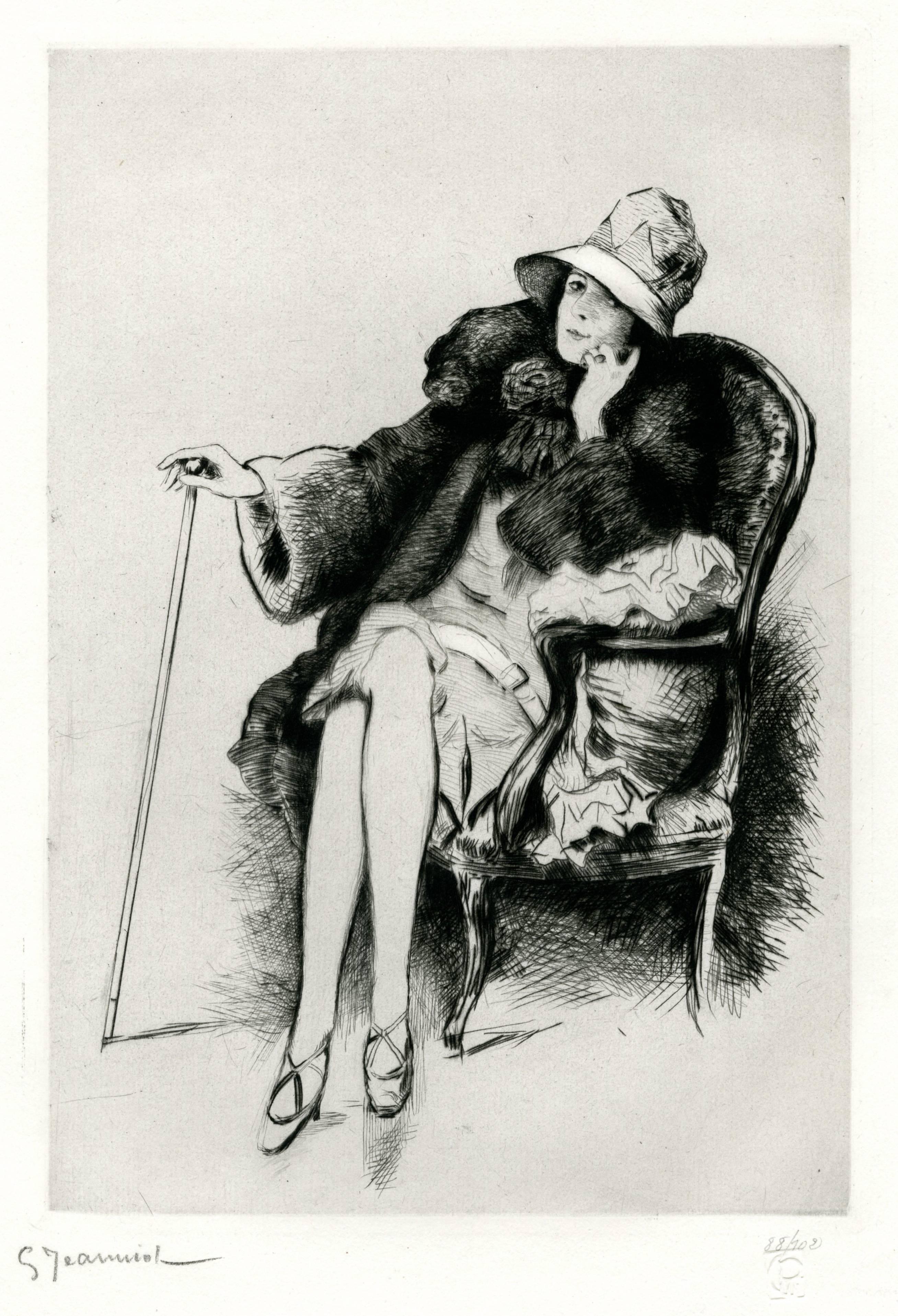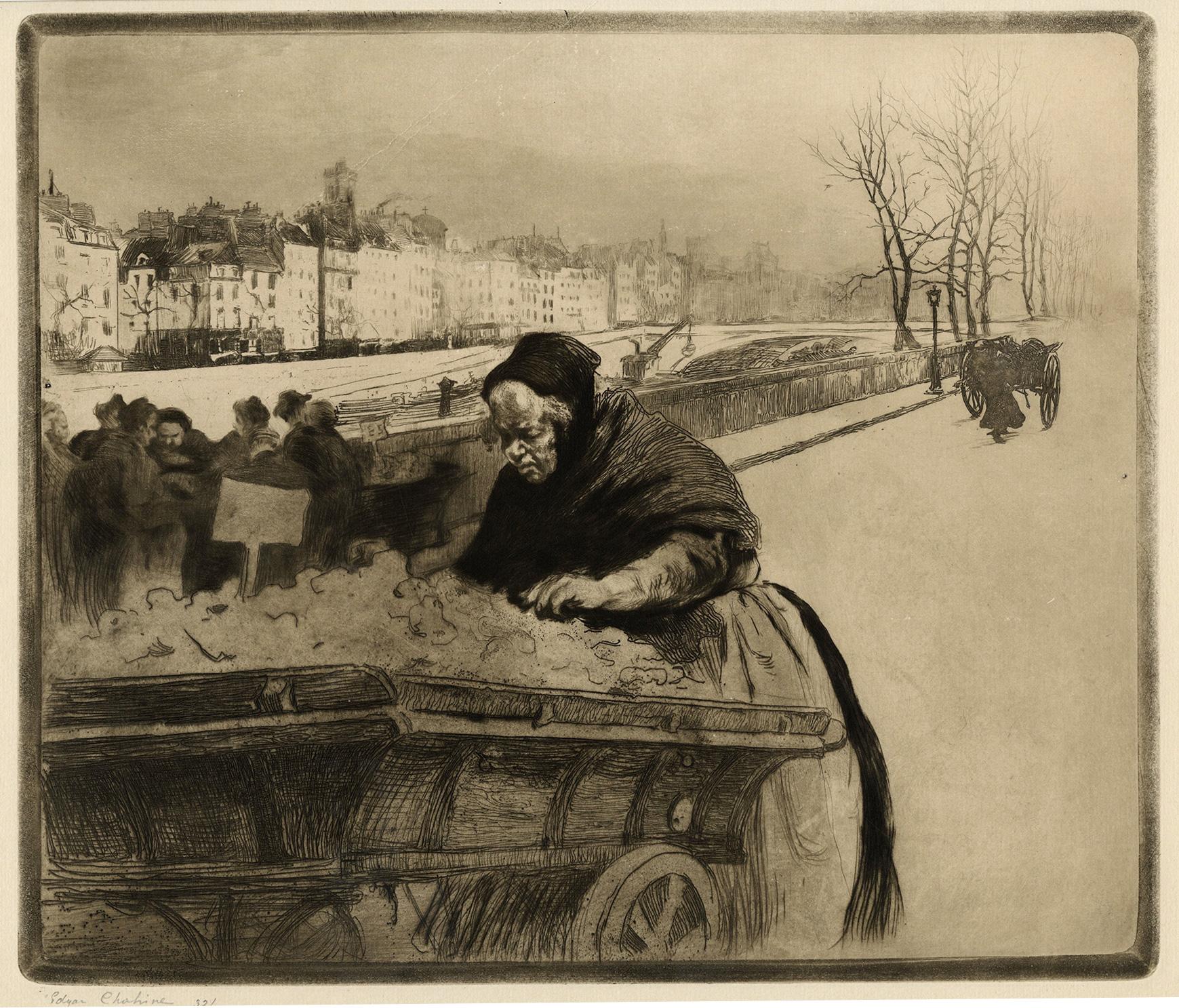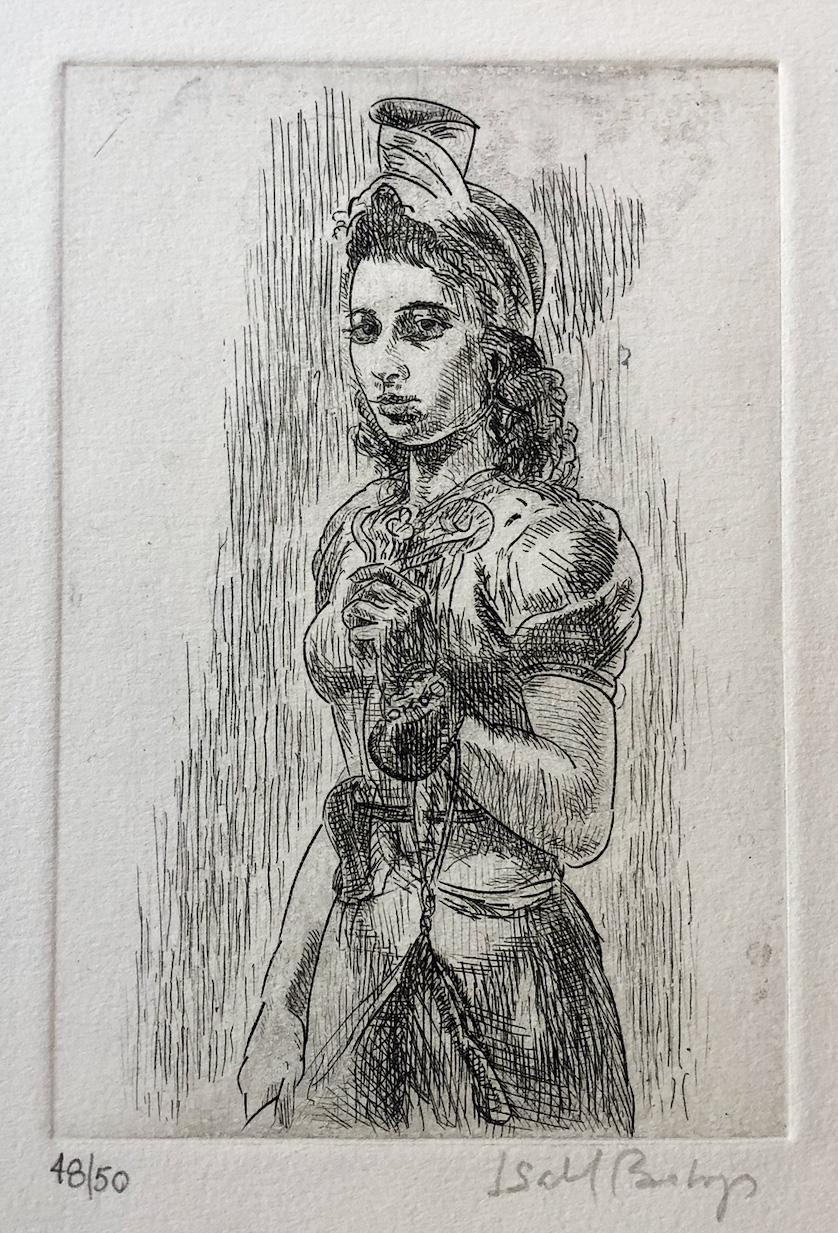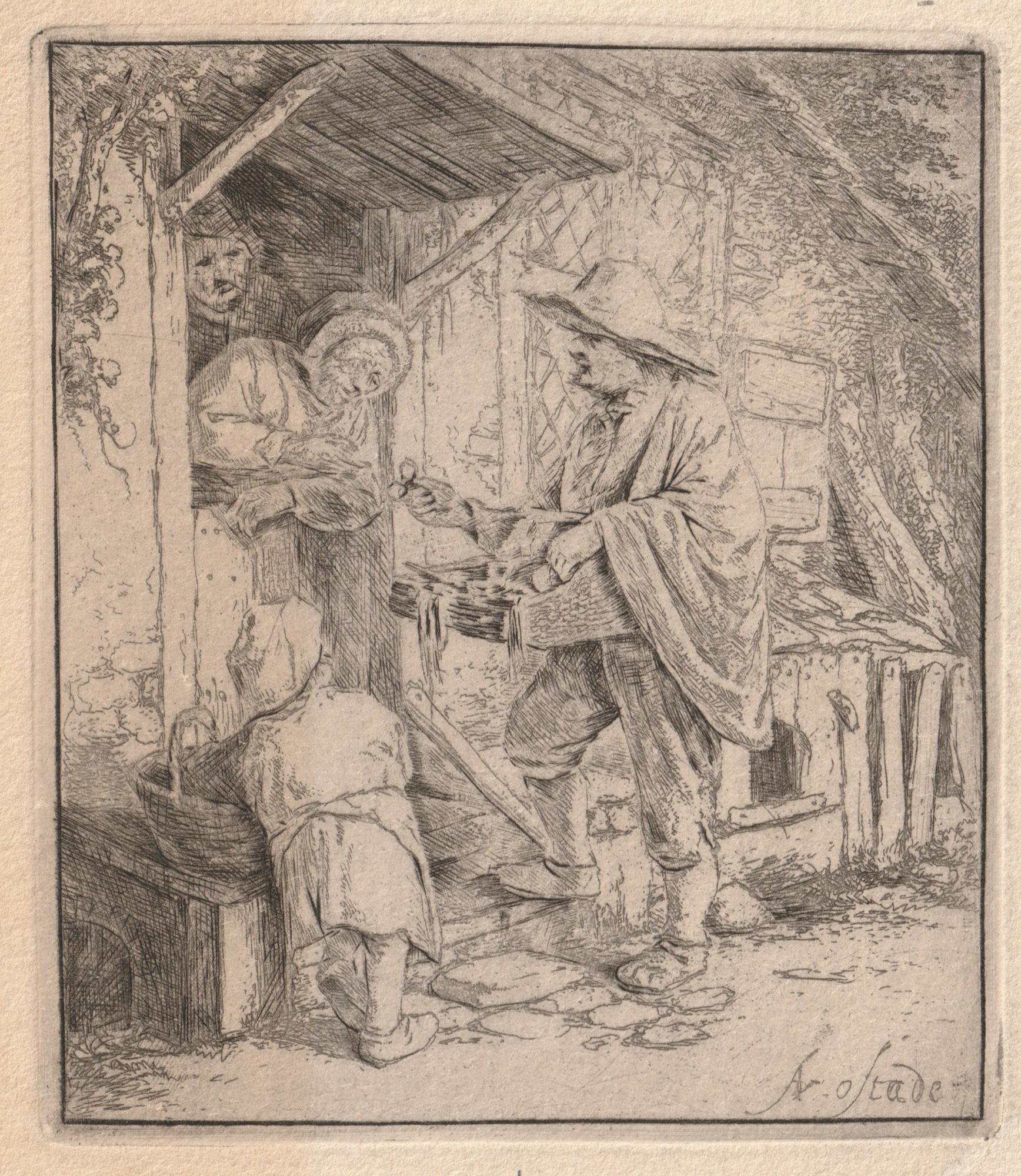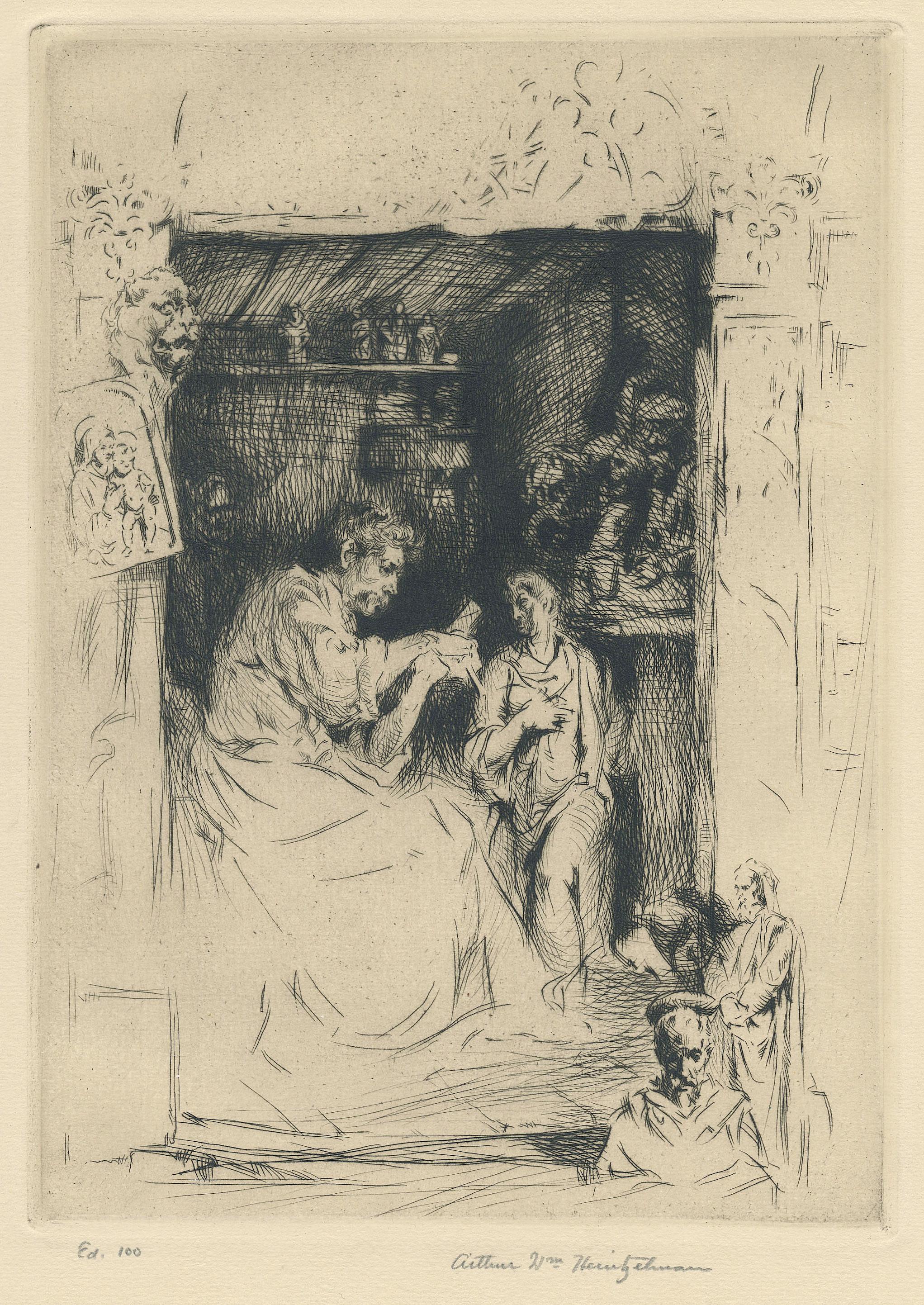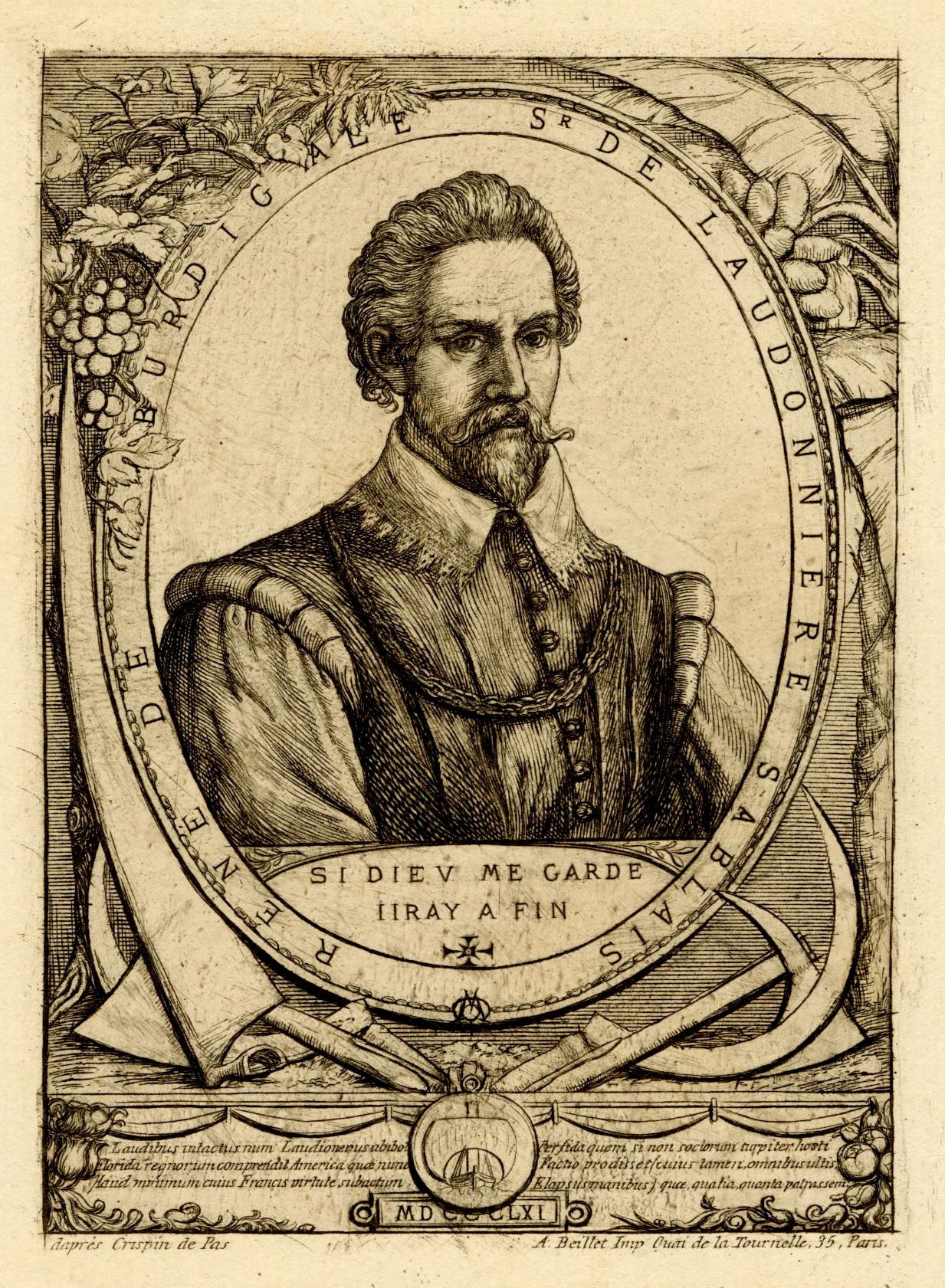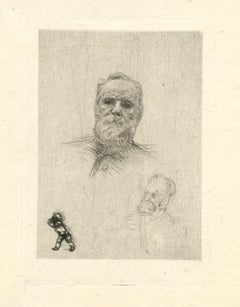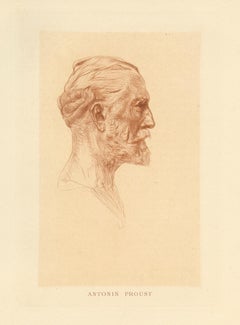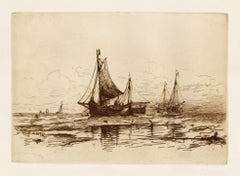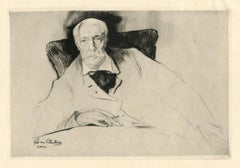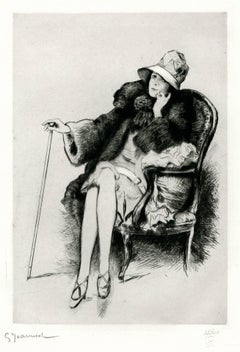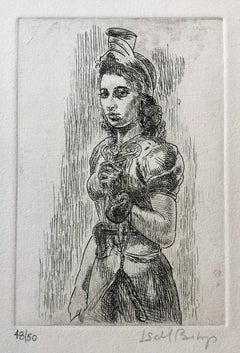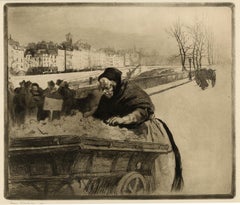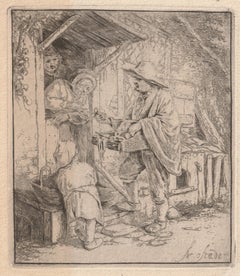Items Similar to "Un rideau" original drypoint
Want more images or videos?
Request additional images or videos from the seller
1 of 2
Fernand Khnopff"Un rideau" original drypoint1904
1904
About the Item
Medium: original etching and drypoint. This impression on wove paper was printed in 1904 and published in Paris by the Revue de l'Art ancien et moderne. Plate size: 6 5/8 x 4 3/4 inches (170 x 120 mm). Not signed.
Condition: there is some age-toning and soiling in the margin.
- Creator:Fernand Khnopff (1858 - 1921, Belgian)
- Creation Year:1904
- Dimensions:Height: 6.7 in (17 cm)Width: 4.73 in (12 cm)
- Medium:
- Period:
- Condition:Condition: there is some age-toning and soiling in the margin.
- Gallery Location:Henderson, NV
- Reference Number:1stDibs: LU2365214901112
About the Seller
5.0
Platinum Seller
Premium sellers with a 4.7+ rating and 24-hour response times
Established in 2006
1stDibs seller since 2023
490 sales on 1stDibs
Typical response time: 1 hour
- ShippingRetrieving quote...Shipping from: Henderson, NV
- Return Policy
Authenticity Guarantee
In the unlikely event there’s an issue with an item’s authenticity, contact us within 1 year for a full refund. DetailsMoney-Back Guarantee
If your item is not as described, is damaged in transit, or does not arrive, contact us within 7 days for a full refund. Details24-Hour Cancellation
You have a 24-hour grace period in which to reconsider your purchase, with no questions asked.Vetted Professional Sellers
Our world-class sellers must adhere to strict standards for service and quality, maintaining the integrity of our listings.Price-Match Guarantee
If you find that a seller listed the same item for a lower price elsewhere, we’ll match it.Trusted Global Delivery
Our best-in-class carrier network provides specialized shipping options worldwide, including custom delivery.More From This Seller
View All"Victor Hugo de face" original drypoint
By Auguste Rodin
Located in Henderson, NV
Medium: original etching and drypoint. Executed in 1885 and printed on thin china paper, this is an exceptionally rare state with the figure study of a child etched at the bottom lef...
Category
1880s Portrait Prints
Materials
Drypoint, Etching
"Antonin Proust" original drypoint
By Auguste Rodin
Located in Henderson, NV
Medium: original etching and drypoint. Catalogue reference: Delteil 10. Published in Paris in 1899 by H. Floury for Auguste Rodin "Statuaire" by Lon Maillard. This impression is prin...
Category
1890s Portrait Prints
Materials
Drypoint, Etching
"Fishing Boats on the Beach at Scheveningen" original etching
By Mauritz Frederick Hendrick de Haas
Located in Henderson, NV
Medium: original etching. Executed in 1883; this is a rich, dark impression on heavy cream wove paper, from the "Original Etchings by American Artists" portfolio, published in 1883 b...
Category
1880s Portrait Prints
Materials
Etching
"Alfred Stevens" original etching and drypoint on japon paper
By Edgar Chahine
Located in Henderson, NV
Medium: original etching and drypoint. This is an earlier-state proof before letters were added for the final published edition. Printed in 1900 for Gazette des Beaux-Arts. Plate siz...
Category
Early 1900s Portrait Prints
Materials
Etching
"La grande soeur" original drypoint
By Théophile Alexandre Steinlen
Located in Henderson, NV
Medium: original etching and drypoint. Catalogue reference: Sanchez and Seydoux 1913-10. Printed in 1913 and published in Paris by Gazette des Beaux-Arts. Plate size: 8 3/4 x 6 1/8 i...
Category
1910s Portrait Prints
Materials
Etching
original etching
By Leonard Baskin
Located in Henderson, NV
Medium: original etching. Printed in 1984 on Cartiere Magnani paper at the atelier of Bruce Chandler in an edition of 1500. This work was executed by Leonard Baskin to illustrate the...
Category
1980s Expressionist Portrait Prints
Materials
Etching
You May Also Like
Femme Assie
By Pierre Georges Jeanniot
Located in Fairlawn, OH
Femme assise
Etching with drypoint, c. 1920
Signed in pencil lower left
publisher stamp lower right
Edition: 100 (88/100)
Condition: Excellent
Image size: 11 3/4 x 8 1/4 inches
Cou...
Category
1910s Portrait Prints
Materials
Drypoint, Etching
14th Street Oriental
By Isabel Bishop
Located in Middletown, NY
New York, Associated American Artists, 1950. Drypoint and aquatint on cream wove paper, 5 7/8 x 3 15/16 inches (150 x 100 mm), full margins. Signed and numbered 48/50 in pencil, lower margin. Printed by Stephen Sholinsky...
Category
Mid-20th Century American Modern Portrait Prints
Materials
Drypoint, Aquatint
La Marchande des Quatres-Saisons
By Edgar Chahine
Located in Middletown, NY
Etching with drypoint on cream wove paper, 11 3/4 x 13 3/4 inches (297 x 347 mm), full margins. Signed in pencil and numbered 32/40, lower margin. Minor mat tone and several small lo...
Category
Early 20th Century Post-Impressionist Portrait Prints
Materials
Handmade Paper, Rag Paper, Drypoint, Etching
The Spectacle Seller
By Adriaen Jansz van Ostade
Located in Middletown, NY
Etching and drypoint on cream laid paper, 4 x 3 3/8 inches (102 x 86 mm), 1/4 inch margins. Signed in the plate, lower left corner. The 3rd state (of 6), after the rounding of the pl...
Category
Mid-17th Century Old Masters Figurative Prints
Materials
Drypoint, Laid Paper, Etching
Un Sculpteur de Paris
By Arthur William Heintzelman
Located in Middletown, NY
Etching and drypoint on cream laid Van Gelder Zonen watermarked paper, 8 7/8 x 6 1/2 inches (220 x 164 mm), full margins. Signed, titled, and inscribed "ed. 100" in pencil, lower mar...
Category
Early 20th Century Modern Interior Prints
Materials
Laid Paper, Drypoint, Etching
René de Laudonnière Sablais (de Burdigale). After Crispjin van de Passe I
By Charles Meryon
Located in Middletown, NY
Paris: 1861
Etching, drypoint, and engraving on cream laid paper, 6 x 4 1/4 inches (152 x 108 mm), full margins. Dog-eared left corner, extending 3-inches into the sheet, but well ou...
Category
Mid-19th Century French School Portrait Prints
Materials
Laid Paper, Engraving, Drypoint, Etching
